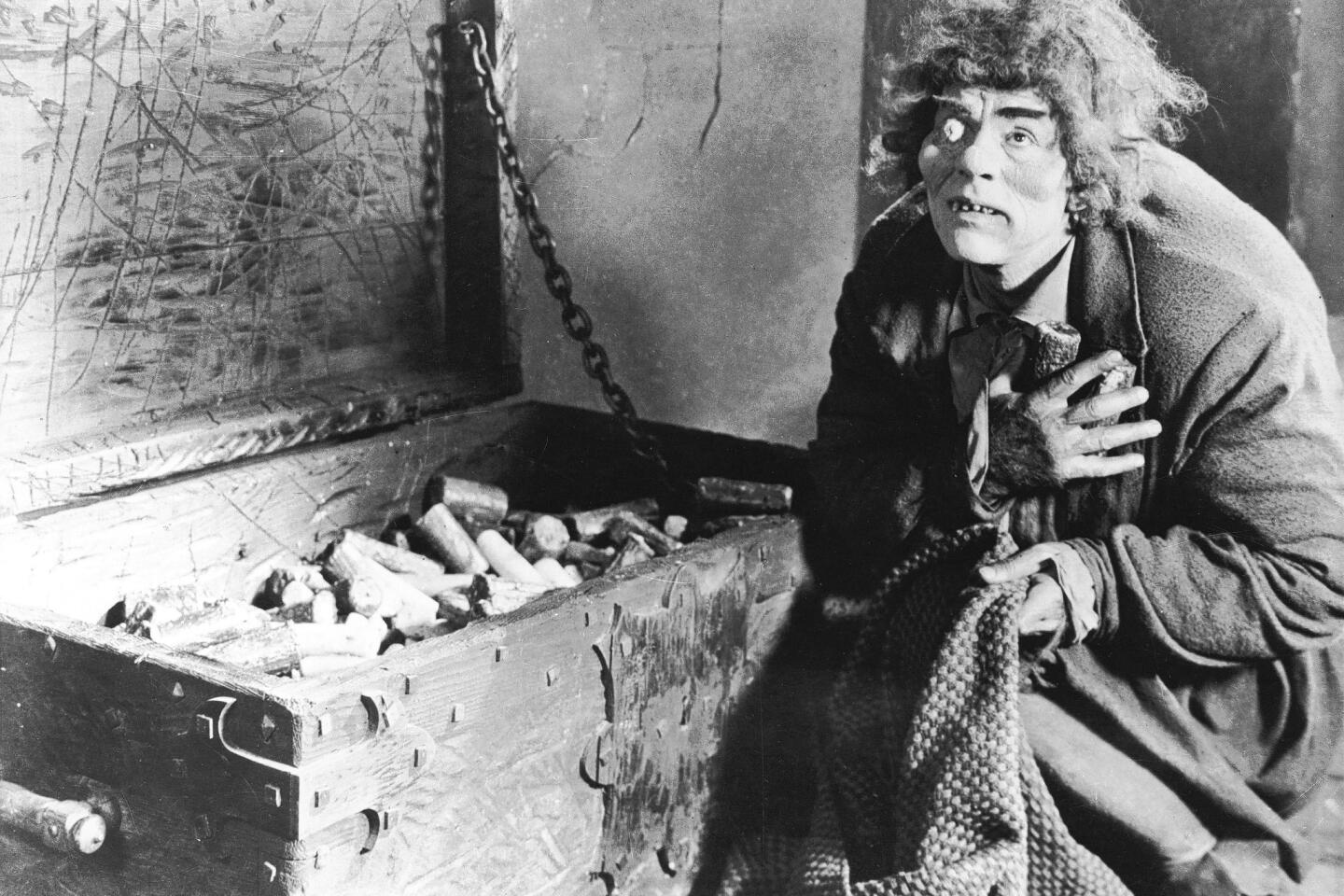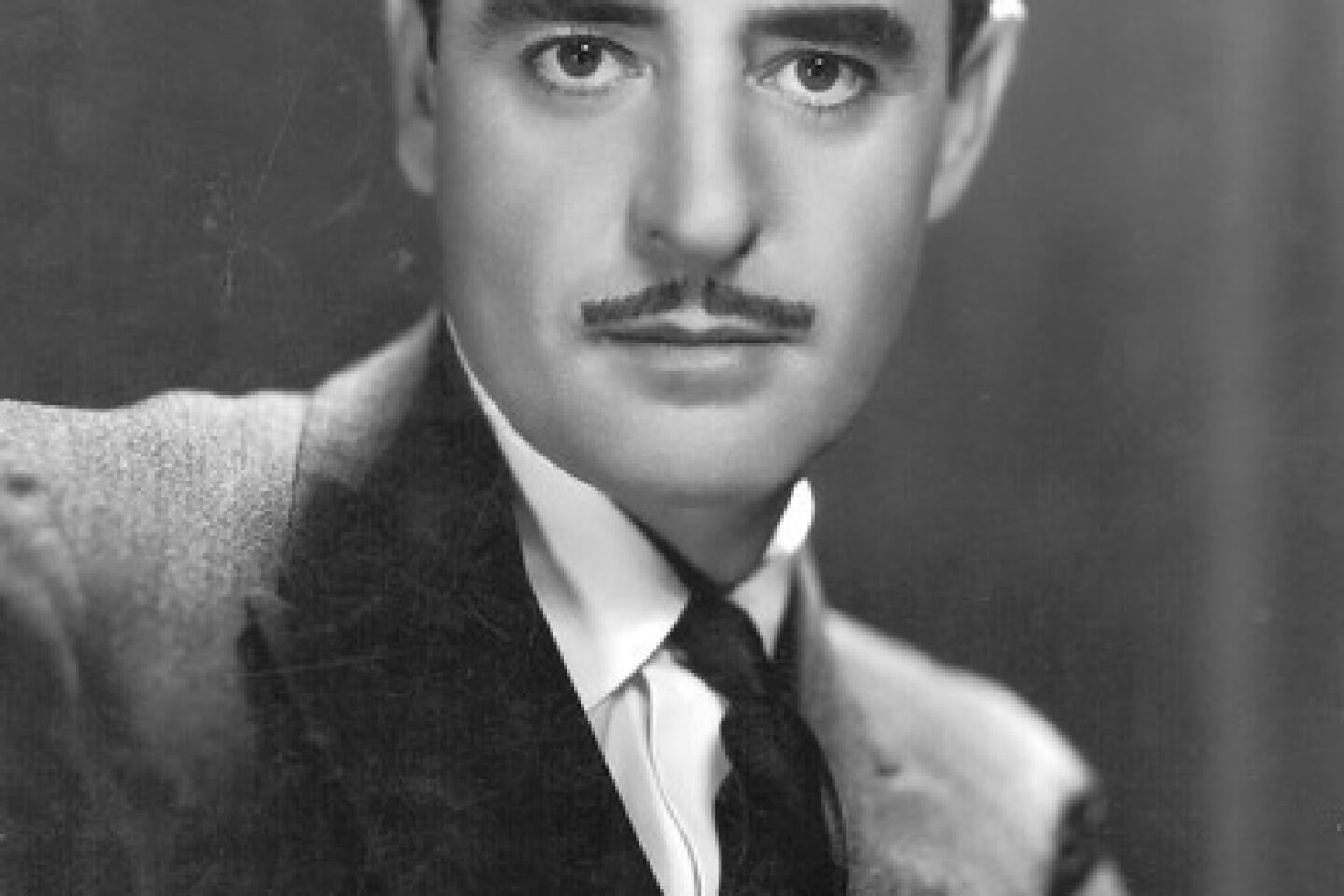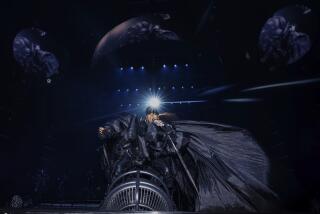For almost half a century, the comedy team of Bob and Ray took the ordinary and made it extraordinarily funny.
During that span they influenced comedians and writers such as Johnny Carson, David Letterman, George Carlin and Garrison Keillor. “Slaughterhouse-Five” novelist Kurt Vonnegut once wrote of the duo: “Their jokes turn out to be universal ... because much of life presents itself as the same dilemma; how to seem lusty and purposeful when less than nothing is going on.”
Though they haven’t performed in decades, their brilliance is on display in several clips on YouTube, including one from “The Tonight Show” with Carson in which Ray Goulding is interviewing Bob Elliott as the first male winner of the “most beautiful face contest.” Goulding seems oblivious to Elliott being a mild-mannered, middle-aged, balding man.
“They’ve been relaxing the requirements this year,” Elliott deadpans, as always, to Goulding. “My neatly chiseled features do stand out.”
“Things like that were so ridiculous, the straighter the face we did it, the funnier it seemed,” Elliott said recently.
“You know, everything Bob and Ray did was mocking broadcasting,” said David Pollock, author of the 2013 book on the duo: “Bob and Ray: Keener Than Most Persons.”
Among their most popular parodies included “Mary Backstayge, Noble Wife,” “One Fella’s Family,” “Mr. Trace, Keener Than Most Persons” and “Jack Headstrong, All American American.”
By making fun of their own medium, said Pollock, “they make their listeners their co-conspirators on both radio and TV. They distinguished themselves by appearing normal. They never really perceived themselves as actors but two guys entertaining themselves and each other. It was always assumed audiences were in on [the joke], and that was part of the fun.”
Goulding died in 1990. Elliott recently turned 91 and hasn’t lost his genially low-key humor.
Elliott noted that the man who puts out the CDs of their vintage radio shows sent him countless emails from fans wishing him a happy birthday. “And with it was a note saying 91 is the new 90,” Elliott said over the phone from his home off the coast of Maine. “I haven’t discovered much difference yet.”
He’s the father of five, including comic actor Chris Elliott. The two played father and son in the 1990-92 Fox comedy series “Get a Life.” The comedy genes continue with the next generation; his granddaughter is former “Saturday Night Live” regular Abby Elliott.
The first of many laughs
Bob and Ray were an instant sensation on radio in Boston in 1946 at station WHDH. Elliott was a disc jockey and Goulding read the news when they began ad libbing bits.
“The manager was new, and they were ready to try anything to put a failing station on the map again,” said Elliott. “He was very free in letting us play.”
Besides their spoofs, Bob and Ray created a stock company of outrageously funny characters such as Goulding’s farm editor Dean Archer Armstead and Elliott’s sportscaster Biff Burns — “This is Biff Burns saying this is Biff Burns saying good night” — and his most famous creation: the inept man-on-the-street reporter Wally Ballou who had won “16 diction awards” during his less-than-illustrious career.
Ballou was based on someone they knew at WHDH. “I think he was the morning janitor,” noted Elliott. “He would come in and ask very strange questions like ‘Did you get your shoes shined today, Bob and Ray?’ I was a able to sound a little bit like him. The older I have gotten the more I sound like him. I can’t tell when I’m me or Wally Ballou!”
New York beckoned in 1951, and for four decades Bob and Ray were heard on radio on the NBC (they won a Peabody for their routines on the long-running “Monitor” radio show), CBS and Mutual networks. Their final series aired on National Public Radio before Goulding became ill.
1/8
Before there was Montgomery Clift, Marlon Brando and James Dean, there was John Garfield. The New York theater actor brought a brooding intensity and realism to his roles in such films as 1938’s “Four Daughters” and 1947’s “Body and Soul” (he earned Oscar nominations for both) and 1945’s “The Postman Always Rings Twice.” Warner Archive’s recently released six of his movies on DVD: 1939’s “Dust Be My Destiny” and “Blackwell’s Island”; 1940’s “Flowing Gold,” “Saturday’s Children”’ and “East of the River; and 1941’s “Dangerously They Live.” A victim of the blacklist, Garfield died of a heart attack at age 39 in 1952. Pictured: American movie star John Garfield, left, testifies before the House Un-American Activities Committee on April 23, 1951, accompanied by his lawyers, Louis Hizey, center, and Sidney Davis. (Bob Mulligan / AFP / Getty Images)
2/8
One of Lon Chaney’s greatest cinematic feats was playing Victor Hugo’s tragic Quasimodo in the lavish 1923 Universal silent “The Hunchback of Notre Dame.” His poignant performance made Chaney one of the major players in Hollywood. No expense was spared to bring this classic to the big screen. Acres of Universal’s back lot were transformed into 15th century Paris, including the elaborate facade of the Notre Dame Cathedral. The production took six months to film, using 750 crew members and more than 2,000 extras. Now Flicker Alley in association with Blackhawk Films Collection has released the Blu-ray of this seminal silent. Since the film apparently did not survive in 35mm, the digital restoration was made from a multi-tinted 16mm print that had been struck from the original camera negative in 1926. This edition also features a new symphonic score arranged by Donald Hunsberger and conducted by Robert Israel. For more information go to http://www.flickeralley.com. Pictured: Lon Chaney as Quasimodo in “The Hunchback of Notre Dame,” directed by Wallace Worsley, 1923. (Universal Pictures / Getty Images)
3/8
Lewis Allen’s 1944 “The Uninvited” is one of the best ghost stories you probably have never seen. Ray Milland and Ruth Hussey play a London-based brother and sister who fall in love with a beautiful, abandoned seaside house during a vacation to the British coast. They are surprised when they are able to buy the house for a very low price, but they soon find out why they got it for such a bargain. A favorite of directors Martin Scorsese and Guillermo del Toro, “The Uninvited” also stars Donald Crisp and Gail Russell. And Victor Young’s lush score produced the hit “Stella by Starlight,” based on the film’s main theme. Criterion has just released the new digital restoration of “The Uninvited” on Blu-ray. (Keystone / Getty Images)
4/8
John Cherry, partner and head of the creative department at Carden and Cherry Advertising in Nashville, hit pay dirt in the 1980s with a series of quirky commercials starring the late rubber-faced Jim Varney as Ernest P. Worrell, an unwelcome pest of an unseen neighbor named Vern. Ernest’s catchphrases, “Hey, Vern” and “Know WhutImean?,” quickly became part of the pop lexicon. Ernest proved so popular with kids that Varney and Cherry took the character to the big screen for several films, starting with 1987’s “Ernest Goes to Camp” to television with the 1988 CBS kids’ show, “Hey Vern, It’s Ernest.” Cherry has written a memoir which he points out is not for children about his experiences called “Keeper of the Clown: My Life With Ernest,” available on Amazon, at bookstores and at http://www.HeyVernItsErnest.com.m. (Mark Humphrey / Associated Press)
5/8
Over the last few years cinema and TV buffs have become addicted to Warner Archive, which has released classics, rarities and vintage TV series and movies on DVD. Now cineastes can get access to even more classic product on the Warner Archive Instant pay streaming service. The service isn’t available on iPad or IPhone, but it can be accessed on computers or by using a Roku2 or 3 set-top box hooked up to an HDTV. Selections are added weekly. Some available titles that aren’t yet on DVD include the TV series “77 Sunset Strip” and “Hawaiian Eye.” For more information go to http://instant.warnerarchive.com. Pictured, Edd “Kookie” Byrnes from “77 Sunset Strip,” circa 1960. (Silver Screen Collection / Getty Images)
6/8
Will Hutchins of “Sugarfoot” in 1958. Hutchins starred as a clumsy cowboy in the ABC series. The first season of the genial western TV series “Sugarfoot” has moseyed onto DVD thanks to Warner Archive. Will Hutchins starred in the ABC series, which alternated on the network with “Cheyenne,” from 1957 to ’59 and “Bronco” from 1959 to ’60. Hutchins played Tom “Sugarfoot” Brewster, a young correspondence-school law student from the east who heads west for adventure and excitement only to discover he’s a pretty clumsy cowboy. Among the guest stars appearing on the series were Dennis Hopper, Charles Bronson and Martin Landau. “Sugarfoot,” which was based on the 1954 film “The Boy From Oklahoma,” rode off into the sunset in 1961. (Cloyd Teter / Denver Post via Getty Images)
7/8
In 50 years, he made more than 400 films and worked with Douglas Fairbanks, Shirley Temple and John Wayne.
Director Allan Dwan’s career spanned from the early silent era in 1911 through 1961. He made more than 400 films including Douglas Fairbanks’ 1922 “Robin Hood” and 1929’s “The Iron Mask,” Shirley Temple’s 1937 melodrama “Heidi” and the John Wayne 1949 war film “Sands of Iwo Jima.” Called the “last pioneer” by Peter Bogdanovich, he’s the subject of an exhaustive book, “Allan Dwan and the Rise and Decline of the Hollywood Studios” by Frederic Lombardi. The richly detailed study of Dwan coincides with the Museum of Modern Art’s upcoming retrospective of the director’s work. (Hulton Archive / Getty Images)
8/8
Silent screen star John Gilbert stands out in ‘Forbidden Hollywood Collection: Volume 6.’ Warner Archive’s new “Forbidden Hollywood Collection: Volume 6” includes such pre-Code goodies as 1932’s “The Wet Parade” and 1934’s “Mandalay” and “Massacre.” But the pièce de résistance of the set is 1932’s delectable melodrama “Downstairs,” starring John Gilbert, who also wrote the story. The silent screen star struggled in talkies after the disastrous 1929 melodrama “His Glorious Night,” but “Downstairs,” in which he gives one of his most daring performances as a charming but manipulative chauffeur, proves that Gilbert had the chops for the sound era. (Hulton Archive / Getty Images)
They also were mainstays on television from when the medium was in its infancy. Their 1951 series “Bob and Ray” featured a pre-”Honeymooners” Audrey Meadows. Cloris Leachman replaced Meadows in 1952 when the show was retitled “Club Embassy.”
“We were given a complete free hand, as was Ernie Kovacs and Steve Allen,” said Elliott. “Everybody was trying to put a finger on how do you do this new medium. We tried different things, and nobody complained. We never did jokes. It was characters and situations that we had seen happen in real life.”
They conquered Broadway in 1970 in “Bob and Ray: The Two and Only” and were embraced by the Not Ready for Prime Time Players in the early years of “Saturday Night Live,” starring with Jane Curtin, Laraine Newman and Gilda Radner in the 1979 NBC special “Bob and Ray, Jane, Laraine & Gilda.”
After Goulding’s death, Elliott was offered projects that had a Bob and Ray sensibility. “I never really wanted to do very much of anything like we did,” said Elliott. “I worked with Garrison Keillor on his radio show for a couple of years and played around the country.”
Elliott has been retired for a while. “I miss it a little when I see things we could have had fun with,” said Elliott. “But I keep busy. I paint. I have been painting since I was kid. If I hadn’t gone into radio when I did I probably would have come out of the Army, gone into the art business and probably would have flopped because I’m not that great.”
He didn’t have to pursue that option, to the eternal joy of countless Bob and Ray fans.
susan.king@latimes.com



















